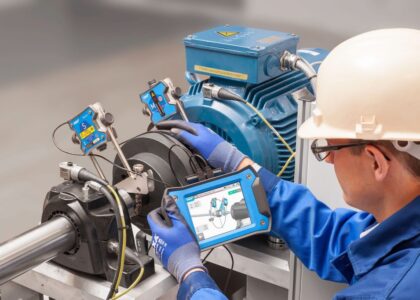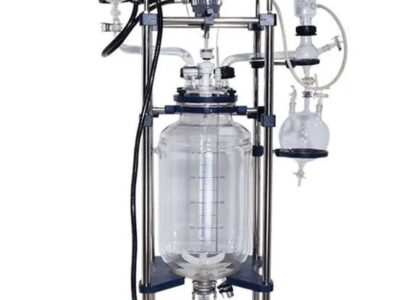In 2022, the global crates market demonstrated robust growth, recording a substantial valuation of US$ 5.3 billion. In the year 2023, it is poised to maintain its upward trajectory with a projected year-on-year (YoY) growth rate of 4%, reaching an estimated valuation of approximately US$ 5.61 billion. The surging adoption of crates across diverse end-use industries is expected to fuel a sustained surge, exhibiting a compelling 5.9% Compound Annual Growth Rate (CAGR) between 2023 and 2033. By the year 2033, the market is anticipated to soar to an impressive valuation of around US$ 9.95 billion.
One notable driver behind this growth is the burgeoning consumer preference for plastic crates, driven by the remarkable resilience of High-Density Polyethylene (HDPE) and the impressive load-bearing capacity offered by collapsible crates constructed from HDPE material. Moreover, the utilization of crates for the storage and transportation of various items, including fruits, vegetables, beverages, and more, within the food and beverage sector, further contributes to this market’s upward trajectory. Projections suggest that the food & beverage segment may experience a noteworthy CAGR of 6.7% throughout the forecast period.
Request Sample Copy of the Report: https://www.futuremarketinsights.com/reports/sample/rep-gb-15559
The global crates market, which includes various types of storage and transportation crates made from materials like plastic, wood, and metal, is influenced by several drivers and restraints. These factors can impact the demand, growth, and overall dynamics of the market. Here are some key drivers and restraints in the crates market:
Market Drivers:
- Growing E-commerce Industry: The rise of e-commerce has increased the need for durable and efficient packaging solutions, including crates, for shipping and storage of products.
- Logistics and Supply Chain Optimization: Businesses are increasingly focusing on optimizing their supply chains and logistics operations, which often involves the use of crates for efficient storage and transportation.
- Sustainability and Eco-Friendly Packaging: The demand for eco-friendly and sustainable packaging solutions has led to the development of reusable and recyclable crates, as businesses seek to reduce their environmental impact.
- Urbanization and Industrialization: Rapid urbanization and industrial growth in emerging markets have driven the need for crates for materials handling, storage, and transportation within industrial facilities and urban areas.
- Food and Agriculture Industry: Crates are widely used in the agriculture and food processing industries for the safe storage and transportation of fruits, vegetables, and other perishable goods, contributing to market growth.
- Automotive Industry: Crates are essential in the automotive sector for the storage and transportation of parts and components, which is driven by the global automotive industry’s growth.
Market Restraints:
- Cost and Price Sensitivity: The cost of high-quality crates can be a restraint, particularly for small and medium-sized businesses that may opt for cheaper alternatives or non-reusable packaging solutions.
- Competition from Alternative Packaging: Crates face competition from other packaging solutions, such as cardboard boxes, pallets, and shrink-wraps, which may be more cost-effective for certain applications.
- Regulations and Standards: Compliance with regulations and standards related to packaging materials and transportation can be a challenge for crate manufacturers and users, particularly in terms of material safety and hygiene.
- Limited Product Innovation: The crates market has seen some innovations, but there may be limitations in terms of new product development and features compared to other packaging solutions.
- Global Economic Conditions: Economic fluctuations and uncertainties can affect business investments and, consequently, the demand for crates in various industries.
- Material Availability and Environmental Concerns: Some materials used in crates, such as wood, may face challenges related to sustainability and supply chain disruptions due to environmental concerns and restrictions.
- COVID-19 Pandemic: The COVID-19 pandemic disrupted supply chains and manufacturing operations, impacting the availability and demand for crates in certain sectors.
For any Queries Linked with the Report, Ask an Analyst: https://www.futuremarketinsights.com/ask-the-analyst/rep-gb-15559
Trending Applications in Different Industries:
Agriculture: Harvesting Success with Crates
In the agricultural sector, crates have redefined the way produce is harvested, stored, and transported.
Gone are the days of flimsy baskets – modern farm crates ensure produce remains fresh and undamaged during transit. With proper ventilation and stackability, these crates are a boon for farmers, allowing for easy loading and unloading.
Retail Revolution: Enhancing Display and Logistics
The retail industry has embraced the Crates Market with open arms.
Stylish yet functional, crates now serve as eye-catching display units. They offer a rustic charm that appeals to customers while streamlining stock replenishment behind the scenes.
E-commerce Efficiency: Streamlining Warehousing
In the realm of e-commerce, efficient warehousing is paramount.
Ready to Learn About Our Approach? Explore Our Methodology: https://www.futuremarketinsights.com/request-report-methodology/rep-gb-15559
About Future Market Insights (FMI)
Future Market Insights, Inc. (ESOMAR certified, recipient of the Stevie Award, and a member of the Greater New York Chamber of Commerce) offers profound insights into the driving factors that are boosting demand in the market. FMI stands as the leading global provider of market intelligence, advisory services, consulting, and events for the Packaging, Food and Beverage, Consumer Technology, Healthcare, Industrial, and Chemicals markets. With a vast team of over 5000 analysts worldwide, FMI provides global, regional, and local expertise on diverse domains and industry trends across more than 110 countries.
Contact Us:
Future Market Insights Inc.
Christiana Corporate, 200 Continental Drive,
Suite 401, Newark, Delaware – 19713, USA
T: +1-845-579-5705
For Sales Enquiries: sales@futuremarketinsights.com
Website: https://www.futuremarketinsights.com
LinkedIn| Twitter| Blogs | YouTube




